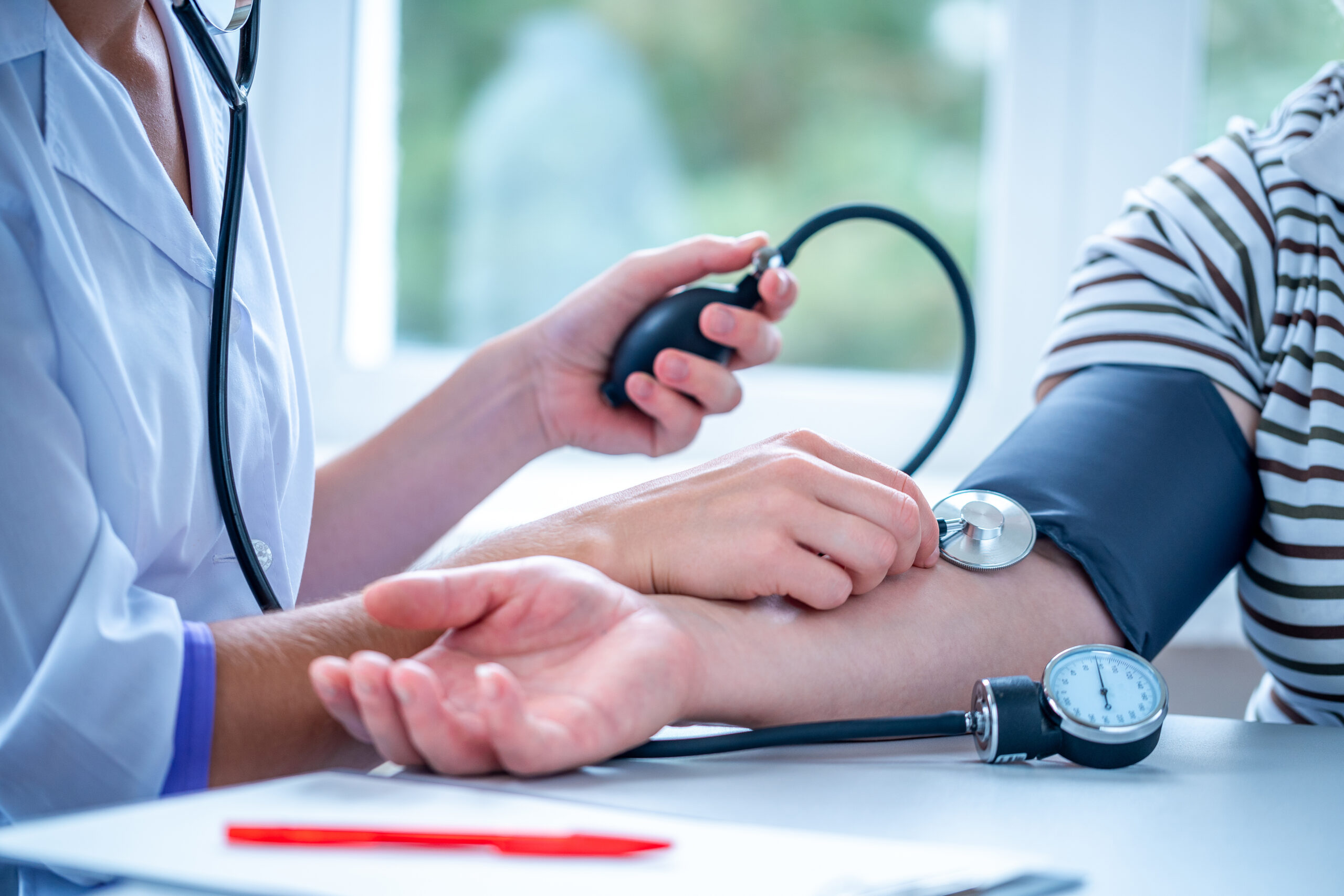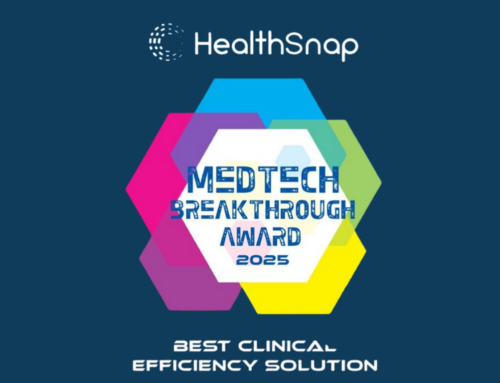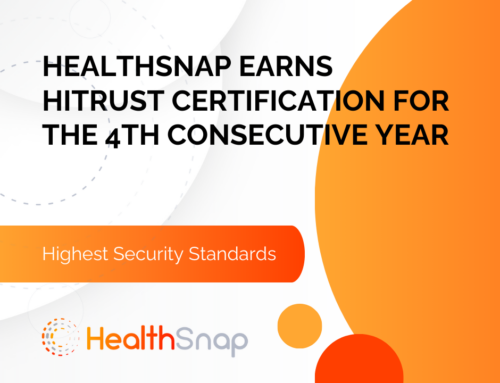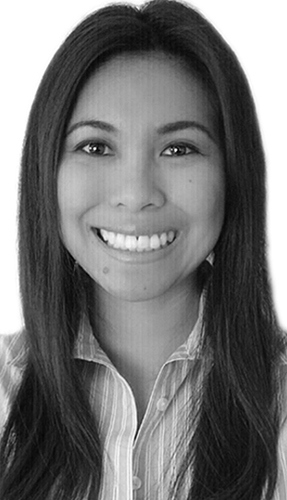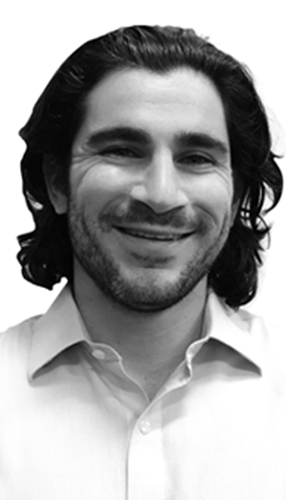As a healthcare provider, you probably know first-hand the challenges of managing chronic conditions, such as hypertension. Hypertension or high blood pressure affects millions of Americans, and requires ongoing care and management to prevent complications. This is where Chronic Care Management (CCM) becomes relevant.
CCM is a comprehensive approach to managing chronic conditions, including hypertension, that helps patients stay on track with their care and achieve better health outcomes. This includes regular monitoring with healthcare providers, medication management, and ongoing support with their treatment plans.
For patients with hypertension, CCM can provide transformative benefits. Hypertension affects nearly one in two adults in the United States, and is a leading cause of stroke, heart disease, and other serious health complications. However, with the right care and support, it can be managed effectively, allowing patients to live healthy, fulfilling lives.
In this guide, we’ll explore the basics of CCM for hypertension and how implementing it in your medical practice can help improve your patient outcomes and enhance their overall quality of care.
What Is Hypertension?
Hypertension, also known as high blood pressure, is a chronic condition characterized by consistently elevated blood pressure levels. This means that the force of the blood flowing through the blood vessels is higher than what is considered normal, putting extra strain on the heart and blood vessels.
According to the CDC, hypertension affects approximately 47% of adults in the country. It’s often referred to as the “silent killer” because it typically has no noticeable symptoms until it reaches a severe stage.
There are two kinds of hypertension – primary hypertension and secondary hypertension. Primary hypertension is most common as it’s often caused by lifestyle factors such as unhealthy diet, stress, and lack of physical activity. Secondary hypertension, on the other hand, is caused by an underlying medical condition, such as thyroid problems, coronary artery disease, or kidney disease.
Uncontrolled hypertension can lead to serious health complications if left untreated, including heart disease, stroke, and kidney failure. Fortunately, with proper management and treatment, it can be controlled, and patients can lead relatively normal lives.
For healthcare professionals, it’s crucial to stay informed and up-to-date on the latest advancements in the management of hypertension to ensure the best possible outcomes for patients. Chronic Care Management (CCM) is one such approach that has shown great promise in improving outcomes for patients with hypertension.
What Is Chronic Care Management (CCM)?
CCM is considered a vital primary care service governed by the CMS that plays a significant role in patient care and health. Patients with two or more chronic conditions benefit from coordinated care services under CCM, including regular check-ins, a comprehensive care plan, education, and goal setting.
These services empower patients to proactively manage their health, resulting in more timely treatment adjustments and a better understanding of their health conditions. The ultimate aim is to keep patients engaged in their care and help them achieve their health goals between appointments.
Unlike other care management processes, these services do not require in-person contact. CCM services do not have any device requirements and practitioners can bill for Remote Patient Monitoring services in conjunction with CCM. Practitioners are able to bill for at least 20 minutes of care coordination services per month. However, it’s essential to note that time requirements for each service must be met separately.
As noted by the CMS, Chronic Care Management services can help reduce healthcare costs and improve outcomes for patients with chronic conditions. In fact, CMS data has shown that patients who receive CCM services have lower rates of hospitalization, emergency room visits, and readmissions.
By utilizing CCM services, healthcare organizations can improve the quality of care for their patients with hypertension and other chronic conditions, leading to better health outcomes and reduced costs.
Chronic Care Management CPT Codes
CPT codes, or Current Procedural Terminology codes, are a set of medical billing codes used to report medical, surgical, and diagnostic procedures and services. CCM CPT codes specifically refer to the codes used to bill for chronic care management services, which involve the coordination of care for patients with two or more chronic conditions. These codes allow healthcare providers to bill Medicare and other insurance companies for the time spent managing and coordinating care for patients with chronic conditions.
The most commonly used CPT codes for chronic care management include:
- 99490: This is used to bill for at least 20 minutes of non-face-to-face care coordination services per month for patients with two or more chronic conditions. Eligible activities include care planning, drug therapy management, and communication with other healthcare professionals involved in the patient’s care.
- 99487: This is used for complex CCM services, usually for patients with more severe and complicated medical conditions. It requires at least 60 minutes of non-face-to-face care coordination services per month.
- 99489: This is used for add-on services to CPT code 99487, providing an additional 30 minutes of care coordination services per month for patients with complex medical conditions.
- 99491: This is used for CCM services provided by a physician or other qualified healthcare professional who is not part of the patient’s primary care team. It requires at least 30 minutes of non-face-to-face care coordination services per month.
It’s noteworthy that these codes are only used for non-face-to-face care coordination services and cannot be used in conjunction with services that are provided during an office visit.
Components of CCM for Patients with Hypertension
Chronic care management involves a combination of various components that work together to help patients with managing hypertension. These typically include:
Patient-Centered Care
CCM is designed to put the patient at the center of care, ensuring that they receive individualized attention and care plans that address their unique needs and concerns.
Regular Check-Ins
Hypertensive patients require regular check-ins with health systems to monitor their blood pressure and overall health status. These check-ins can be conducted through telemedicine or in-person visits, depending on the patient’s needs and preferences.
Medication Management
Proper medication management is crucial for patients suffering from high systolic or diastolic blood pressure. This includes making sure that patients are taking their medications as prescribed, monitoring for any side effects, and adjusting dosages as needed.
Lifestyle Modifications
Lifestyle modifications such as exercise, diet, and stress reduction can help patients manage their blood pressure. CCM can include guidance and support for patients to make these changes, such as referral to a registered dietitian or exercise program.
Patient Education
Educating patients about their condition, treatment options, and self-management strategies is also a key component of CCM. Patients who are informed and empowered are better able to manage their condition and avoid complications.
Benefits of CCM for Patients with Hypertension
Studies have shown that CCM can be highly effective in managing chronic conditions like hypertension. One study published in the Medicine Journal found that CCM resulted in a 34.8% reduction in hospitalizations and a 42.3% reduction in emergency room visits for chronically ill patients. We know now that by providing patients with the support and tools they need to manage their condition, CCM can improve patient outcomes while also reducing healthcare costs.
But exactly how does it help patients who have hypertension? Let’s see:
Improved Control Over BP Levels
CCM services for hypertension management can significantly improve patient outcomes by reducing the risk of various health complications. Research by the American Heart Association (AHA) has shown that even a small reduction in blood pressure levels can lead to significant benefits. For instance, a reduction of just 5 mm Hg in systolic blood pressure can lead to a 14% reduction in the risk of stroke, a 9% reduction in the risk of heart disease, and a 7% reduction in the risk of overall mortality.
And remember, hypertension is a major risk factor for several chronic conditions such as chronic kidney disease, dementia, and diabetes. Chronic care management can help your patients manage their hypertension effectively and reduce cardiovascular disease morbidity.
Enhanced Medication Adherence
Medication adherence can be a challenge for many patients with chronic conditions, including hypertension. In fact, as many as 50% of patients with hypertension don’t take their medications as prescribed. This can obviously pose serious risks, as non-adherence to medication regimens has been linked to increased rates of hospitalization, ER visits, and overall healthcare costs.
The chronic care model can address this issue by providing your patients with the necessary support and resources to help them take their medications on time. This can include medication reminders, education on the importance of medication adherence, and follow-ups with their doctor to monitor medication use and address any issues or concerns.
By improving medication compliance, CCM services can help hypertensive patients achieve better blood pressure control and reduce their risk of further complications. Improved medication adherence has shown to reduce the incidence of cardiovascular events, such as strokes and heart attacks, by up to 25% among patients with hypertension.
Increased Patient Engagement
Regular interaction between patients and their healthcare providers is a crucial component of CCM. This allows for ongoing support and guidance to be provided to patients with high blood pressure, which can lead to increased patient engagement and empowerment. Research has shown that patients who are more engaged in their own care are more likely to adhere to their medication regimen, which leads to better blood pressure control compared to patients who are less engaged.
In addition to improved health outcomes, increased patient engagement and involvement in their own care can also result in greater patient satisfaction with their healthcare experience. This can be particularly important for hypertensive patients, who may require ongoing care and management.
Improved Quality of Life
Patients with hypertension often experience a reduced quality of life due to the complications associated with the condition; for example, all-day fatigue or difficulty sleeping. Chronic care management can help patients achieve better control of their blood pressure, leading to a better quality of life.
By improving blood pressure control and overall health outcomes, CCM services can help patients better manage their daily activities and enjoy a more fulfilling life. They may experience reduced symptoms of hypertension, such as headaches and fatigue, resulting in enhanced productivity and social engagement.
Reduced Healthcare Costs
Under Chronic Care Management (CCM), there’s regular communication between patients and their doctors, which helps identify and address health issues before they become severe enough to require hospitalization or ER care. This can result in significant cost savings for healthcare organizations and payers. It has been shown that patients who receive chronic care management have lower rates of hospitalization, emergency room visits, and readmissions, which can be expensive for healthcare systems to manage.
Furthermore, CCM services may help to prevent costly complications associated with poorly controlled hypertension, such as stroke and heart disease. By regularly monitoring patients’ blood pressure and medication adherence, healthcare providers can intervene early and prevent these costly events from occurring.
How CCM Works for Patients with Hypertension
Chronic Care Management involves multiple care providers working together to manage patients with chronic conditions, such as hypertension. CCM for hypertensive patients includes regular monitoring of blood pressure, medication management, lifestyle modifications, and patient education.
The CCM process in these cases begins with an initial evaluation to determine the severity of the hypertension and any associated risk factors. This evaluation includes a comprehensive medical history, physical examination, and laboratory testing to assess kidney function, cholesterol levels, and other parameters.
Once the diagnosis of hypertension is established, the healthcare team collaborates with the patient to develop a personalized care plan that includes specific treatment goals and interventions.
One of the primary goals of CCM here is to control blood pressure. To that end, you can prescribe lifestyle modifications, such as weight loss, exercise, and dietary changes. You’ll work closely with the patients to ensure they are taking their medications as prescribed and to monitor for any adverse effects. You will observe the patient’s blood pressure and adjust their treatment plan as needed. The frequency of follow-up appointments will depend on the patient’s level of hypertension control and any associated risk factors.
In addition to monitoring blood pressure, CCM for hypertension also includes patient education, i.e., you provide patients with the knowledge and skills necessary to manage their condition effectively. This education may include information on diet, exercise, how to monitor blood pressure at home, and so on.
The Role of Remote Patient Monitoring (RPM) in Enhancing Chronic Care Management
Remote Patient Monitoring (RPM) is a technology that allows healthcare providers to remotely monitor and manage their patient’s health in near real-time, without the need for office visits. Patients are provided with digital devices to check their blood sugar, blood pressure, weight, oxygen levels, and other vital signs from the comfort of their own homes. These devices then securely send the results to their physician, who can intervene if any readings fall outside of the desired range.
RPM is a useful tool in monitoring various health conditions, such as hypertension, obesity, diabetes, COPD, sepsis, pneumonia, and post-surgery cases. According to KLAS research, RPM has proven successful in minimizing hospitalizations by up to 38%. It has also been associated with a 25% increase in patient satisfaction, a 25% reduction in emergency room visits, a 25% reduction in readmissions, and a 17% reduction in costs.
To qualify for RPM, a physician or qualified healthcare provider must deem it necessary and order the service. The use of FDA-defined devices with a minimum of 16 days of readings per 30 days is required, and it must involve a minimum of 20 minutes per month by clinical staff. Healthcare providers can also bill for Evaluation/Management services related to Remote Patient Monitoring (RPM).
Remote Patient Monitoring CPT Codes
There are several CPT codes related to Remote Patient Monitoring (RPM) you can use to bill for these services. The following are the current RPM CPT codes:
- 99091: This code is used for collection and interpretation of physiologic data from digital devices (e.g., blood pressure monitor, weight scale, pulse oximeter) that is transmitted to the provider by the patient or caregiver. It can be billed once per patient per month and requires at least 30 minutes of provider or clinical staff time.
- 99457: This code is used for RPM services involving at least 20 minutes of interactive communication between the patient or caregiver and the provider or clinical staff, per month. It includes review of physiologic data, adjustment of care plan, education, and support.
- 99458: This code is used for additional RPM services provided beyond the initial 20 minutes of interactive communication required for 99457. It can be billed for each additional 20 minutes of interactive communication.
- 994X9: This is a series of add-on codes used for RPM services furnished by clinical staff under the supervision of a physician or other qualified healthcare professional. These codes are used in addition to the primary RPM code (e.g., 99457, 99458) and are based on the duration of the service provided by the clinical staff.
The RPM services must meet certain criteria to be eligible for billing, including the use of FDA-cleared medical devices and the provision of at least 16 days of physiologic data per month. Additionally, RPM services must be deemed medically necessary and ordered by a physician or other qualified healthcare professional.
Chronic Care Management vs. Remote Patient Monitoring
CCM and RPM are two valuable tools for healthcare providers to manage patient care in between office visits. While they have some similarities, they serve different purposes. Chronic Care Management (CCM) provides ongoing patient support and education to those with two or more chronic health issues. It offers personalized support such as annual well visits, principal care management, transitional care, and cognitive testing.
It also provides patients with a detailed care plan and regular check-ins to help them proactively manage their health. This benefits patients’ understanding of their conditions and provides the opportunity for more timely adjustments in treatment. CCM’s goal is to help patients stay involved in their own care so they can continue meeting their health goals between appointments.
On the other hand, Remote Patient Monitoring (RPM) provides devices to monitor patients’ physiologic data and sends the results directly to the physician in near real-time. RPM is an ideal opportunity for patients with one or more chronic conditions who are on a treatment regimen to better manage their health between office visits.
Patients can test their oxygen levels, blood pressure, blood sugar, and weight in the comfort of their own homes. Doctors are alerted if any of the readings fall outside the desired parameters and can intervene accordingly. RPM is particularly useful for patients recovering from surgery or those with conditions such as hypertension, pneumonia, COPD, CHF, diabetes, obesity, sepsis, and others.
Clearly, both CCM and RPM offer valuable benefits on their own, but when combined, they create a powerful synergy that can significantly improve your patient outcomes. By leveraging CCM’s comprehensive care plan and ongoing patient support with RPM’s near real-time monitoring capabilities, you can provide your hypertensive patients with a personalized, proactive approach to managing their condition. This combination can help reduce hospitalizations, emergency room visits, and readmissions, while also improving patient satisfaction and overall quality of life which means a lot in America nowadays.
Adopting CCM and Remote Patient Monitoring for Hypertensive Patients
Hypertension – especially if it’s severe – requires continuous management and monitoring to prevent deadly complications like heart attack, stroke, and kidney disease. By adopting both CCM and RPM, you can provide personalized care plans and regular check-ins to keep your hypertensive patients on track with their treatment and lifestyle modifications.
To implement CCM and RPM for hypertensive patients, you should take the following steps:
Assess Patient Eligibility
Your hypertensive patients who are suffering from another chronic condition as well (such as ischemic heart disease or diabetes mellitus) are eligible for CCM services. Remote Patient Monitoring may also be appropriate for these chronic patients who require ongoing monitoring.
Educate Your Patients
Think about how you can educate patients about the benefits of CCM and RPM, including improved blood pressure control, reduced risk of complications, and increased involvement in their own care. In addition to highlighting the potential benefits of CCM and RPM, show your patients how the RPM devices work, how to use them, and how to interpret the data. Provide patients with instructions, user manuals, and video tutorials to help them get started.
Encourage them to ask questions and address any concerns they may have about CCM and RPM. Make sure you have adequate time during office visits to answer their questions and provide additional information as needed.
Invest in RPM Technology
Investing in RPM technology such as blood pressure monitors, scales, and pulse oximeters is a crucial step in implementing Remote Patient Monitoring (RPM) for your patients. By providing these devices to your patients, they can measure their vitals at home and transmit the data to your team for analysis. This allows your team to monitor your patients’ health in near real-time and detect any potential issues before they become serious.
RPM devices can also help your patients become more engaged in their own care, as they can see how their daily activities and habits affect their health. By educating your patients on how to properly use these devices and emphasizing the benefits of RPM, you can empower them to take control of their health.
Develop Personalized Care Plans
You should develop personalized care plans for your hypertensive patients based on their individual needs and health goals. Care plans should include medication management, lifestyle modifications, and regular follow-up appointments.
Train Your Staff
Training your staff on how to use RPM technology and how to provide CCM services is equally important. Provide education and resources to your team on how to use RPM devices and software to collect and analyze patient data, as well as how to provide ongoing support to hypertensive patients.
Your team should be trained on effective communication skills to ensure that patients are informed and engaged throughout the process. They should also be equipped with the necessary tools and resources to provide ongoing support to hypertensive patients, such as:
- RPM Devices: Blood pressure monitors, pulse oximeters, scales, glucometers, and other devices that your patients can use at home to measure their vitals and transmit data to the healthcare team.
- Electronic Health Record (EHR) System: A system that can manage patient data, including RPM data, to help your staff monitor and manage patient care effectively.
- Communication Tools: Communication tools such as secure messaging, video conferencing, and telephone services can help your staff communicate with patients effectively and provide ongoing support.
- Patient Education Materials: Educational materials such as brochures, videos, and online resources can help patients understand their condition, standardized hypertension treatment options, and how to manage their cardiovascular health.
Simply put, adopting CCM and RPM is a win-win situation for both you and your patients, as it allows for more effective and efficient care management. HealthSnap also offers a Care Management Services solution so that you can leverage our clinical staff as an extension of your practice to deliver personalized consultations, education, and care coordination. Learn more about how HealthSnap’s Care Management Services team can help you maximize your patient reach.
Enhance Your Chronic Disease Management Capabilities With HealthSnap’s RPM Technology and AI-Guided Care Coordination
If you are a healthcare provider looking for a powerful tool to remotely monitor and manage chronic diseases like hypertension, our integrated virtual Care Management Platform is designed just for you. With HealthSnap, you can use Remote Patient Monitoring (RPM), care coordination and analytics guided by AI to improve your patient outcomes, reduce healthcare utilization, and diversify your revenue streams.
Our platform allows you to offer your hypertensive patients a concierge-level of chronic illness care in the comfort of their own homes. Our customizable care management tools, combined with device shipping and logistics for pre-configured and cellular-enabled blood pressure monitors, weight scales, and glucose meters, make it easy for patients to self-monitor and for your team to analyze and respond to their data in real-time.
We also offer personalized patient engagement solutions, Care Management Services, patient and population-level analytics, and seamless integration with over 80 Electronic Health Records (EHR) so you can supercharge your care team and support highly scalable virtual hypertension management programs. To learn more about how you can offer the highest level of care to all of your chronically ill patients regardless of their location, call us at 888-780-1872 or get in touch with us online.

